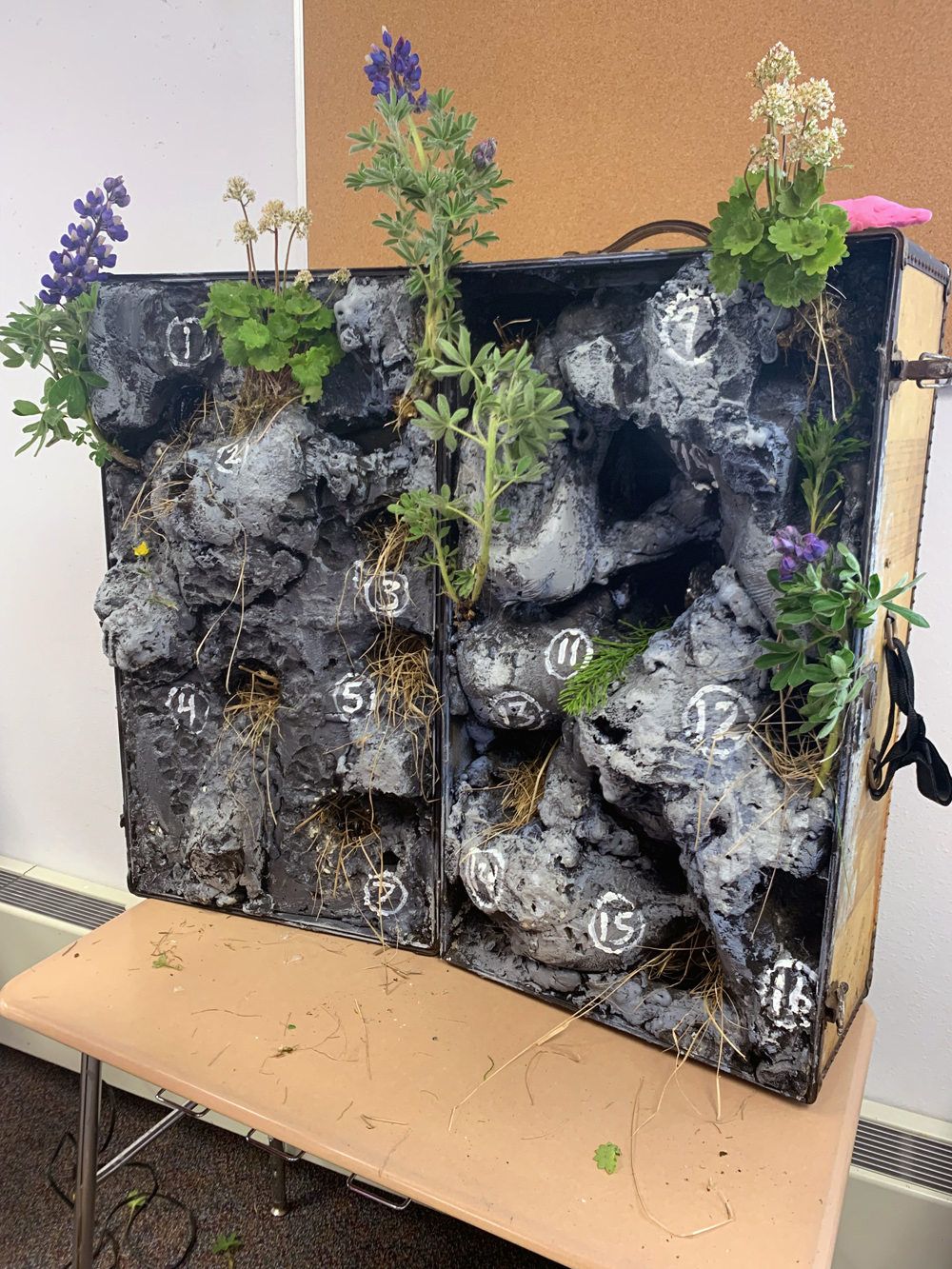Many seabirds that breed on both the Commander and Pribilof Islands lay their egg in either a crevice or burrow. These species include the puffins and auklets. Biologists typically monitor the breeding success (how many eggs hatch, and how many of these chicks then successfully fledge) of these species by frequent checks of nest-sites. Biologists sometimes also reach into crevice nest-sites to measure chicks and collect information on chick-growth. In Alaska, a colloquial phrase often used by biologists for reaching into burrows or crevices to collect these data is “grubbing”.
During the winter of 2022, Ram Papish designed the “Grub Hub” as a tool for teaching students more about where many of our seabirds breed, and how and why biologists collect information about breeding success and chick-growth.
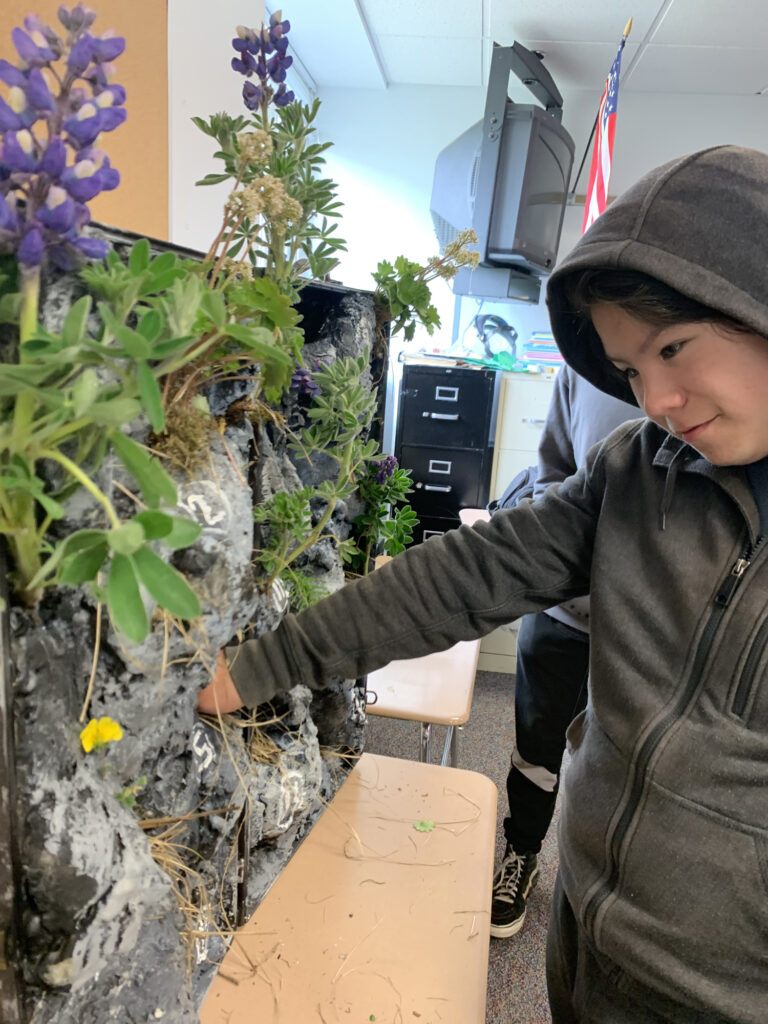 Checking for eggs. Photo by Ram Papish
Checking for eggs. Photo by Ram Papish
The Grub hub is created inside an old trunk. The Grub hub was used for the first time at the St. George Island Seabird Art camp in July 2022, and was a great success. Students loved tracking the contents of the different crevices over the course of the week, and recording when eggs hatched.
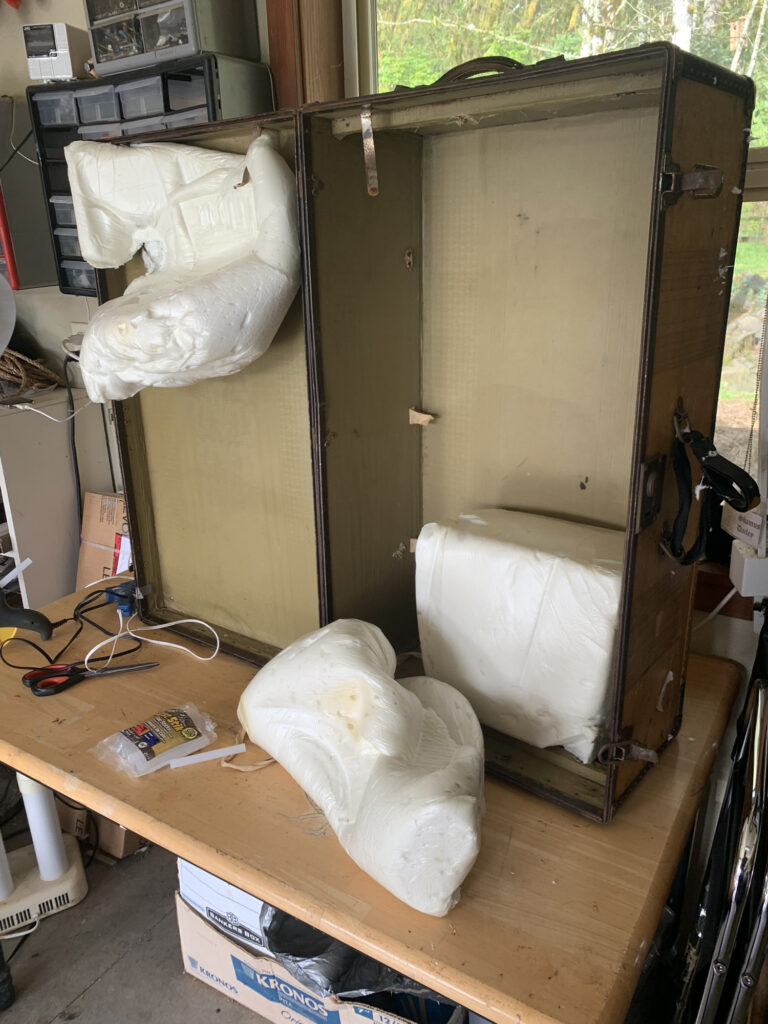
Starting with a trunk. Photo by Ram Papish
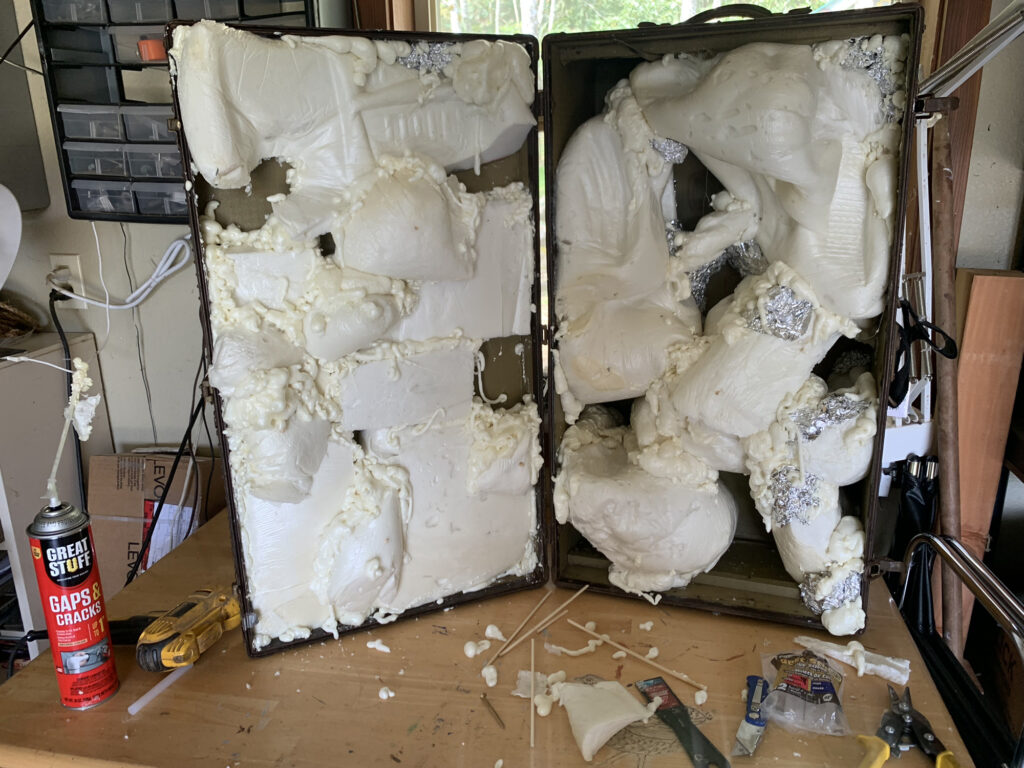
Crevices take shape. Photo by Ram Papish
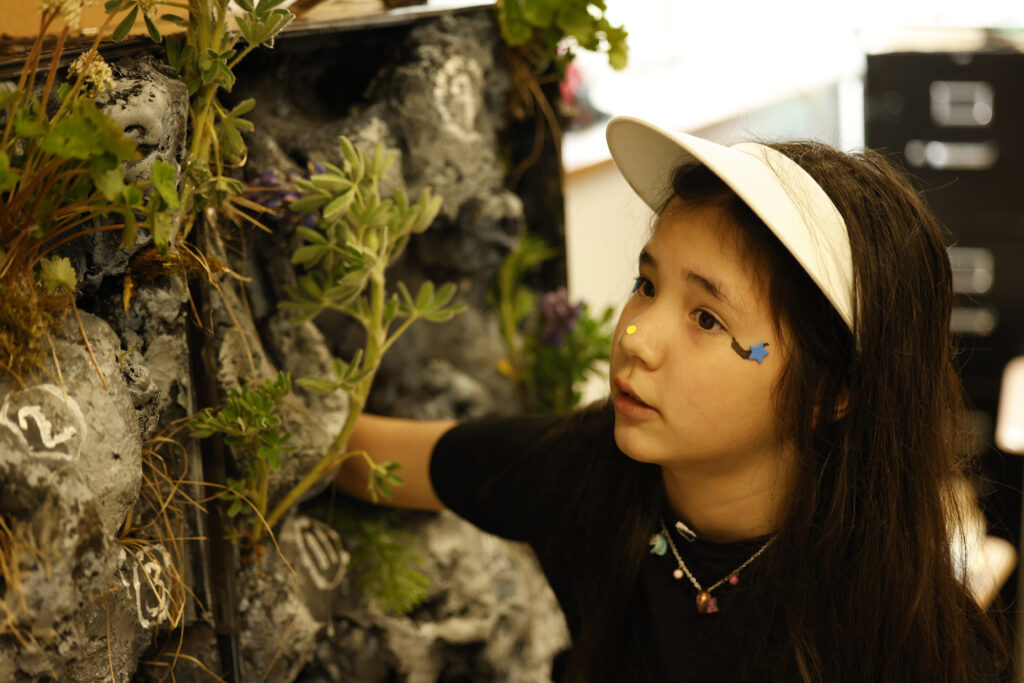
Elbow deep! Photo by Ram Papish
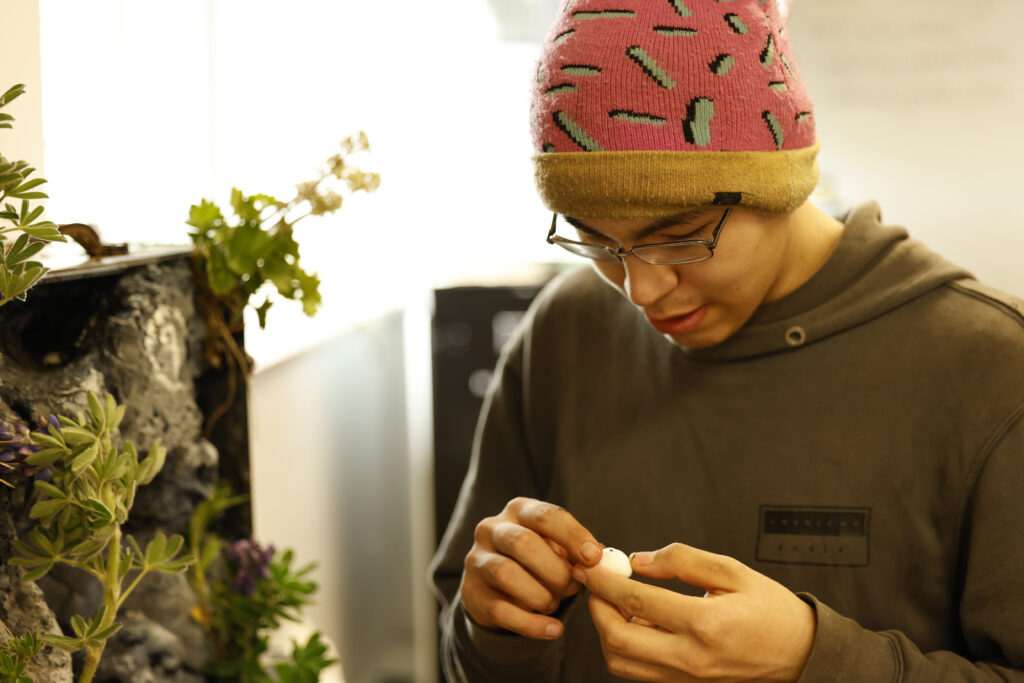
Finding an egg. Photo by Ram Papish
We’re looking forward to using the Grub hub at the St. Paul Seabird Camp in 2023

